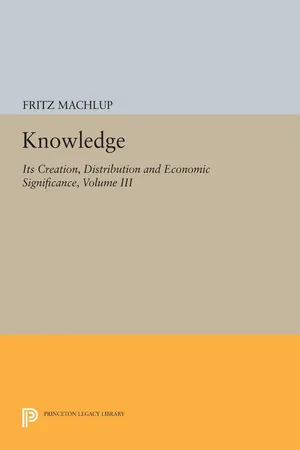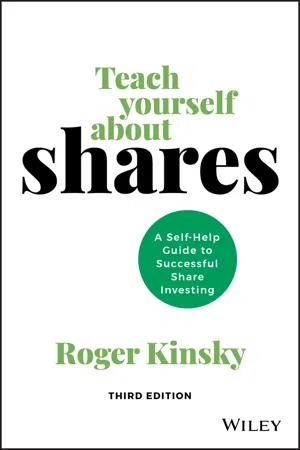Economics
How Are Stock Prices Determined
Stock prices are determined by the forces of supply and demand in the stock market. Factors such as company performance, economic conditions, investor sentiment, and market speculation all influence stock prices. Additionally, stock prices can be influenced by external events, such as geopolitical tensions or changes in government policies.
Written by Perlego with AI-assistance
Related key terms
1 of 5
3 Key excerpts on "How Are Stock Prices Determined"
- eBook - ePub
Capital Markets and Institutions in Bangladesh
Some Implications of Japanese Experience
- M. Farid Ahmed(Author)
- 2019(Publication Date)
- Taylor & Francis(Publisher)
5 Behavior and structure of stock pricesThe significance of a well functioning and robust stock market as a corollary to a sustainable growth of the economy in general and private corporate sectors in particular is being increasingly recognized in recent years. In a modern economy with sizable private corporate sectors, stable security price and general economic development are so interwoven that the state of the economy and specially the investment climate thereof can easily be guessed by a mere review of the behavior of the stock markets. The stock markets to an economy, what a clinical thermometer is to a human body. It reflects the health of the economy. It is recognized that the stock market and economic activity move in a similar pattern that indicates investors’ attempt to forecast economic trends. Thus, the stock price index is considered as a major indicator of the economy.Stock prices, in general, are determined by the interaction of demand and supply. Stock differs from other consumer goods to the extent that stock itself can’t directly be consumed like other consumer goods rather the income generated by it can be used for consumption purposes. Accordingly, determination of a stock price may be governed by the volume of net assets it holds. However, in spite of its considerable bearing on the price of a stock, net assets are, in a sense, the liquidation value of the enterprise and thereby not considered most suitable measure for a going concern. Basically, the most important aspect in the stock price mechanism is the amount of earning the investor’s money will realize in a certain period. This is usually related to the dividend rate which can play a crucial role behind demand and supply relationship and thereby price formation. An anticipated future dividend is subject to uncertainties and influenced by many economic and noneconomic factors. Fluctuations in security prices are the function of a variety of factors. Interest rates, industrial production, commodity prices, savings, investments, population, employment, political and economic developments, technological changes, corporate profits, earnings or dividends, investors’ feelings etc. are the prominent ones that can influence stock prices. As a result, many indeterminate factors come into play to complicate the pricing mechanism. All these may conveniently be divided into ‘internal’ and ‘external’ factors. While the former is related to the internal achievement of a particular industry or a company, the latter is exclusively the outcome of the stock market conditions affecting the stock prices in general. Chen, Roll and Ross (1986) have hypothesized a broad range of influences that could affect security prices. According to them the value of a share is equal to the present value of future cash flows to the shareholder. Any factor impacts on either the size of future cash flows or the discount rates used to value the cash flows will have its bearing on the price. The primary function of a stock market is to allocate resources to the most profitable investment opportunities. If stock prices provide accurate signals for resource allocation, firms are able to make correct production-investment decisions, and investors are able to choose the most suitable stocks for investment. These choices are possible if the market is efficient, that is, if stock prices ‘fully reflect’ all available information. - eBook - PDF
Knowledge: Its Creation, Distribution and Economic Significance, Volume III
The Economics of Information and Human Capital
- Fritz Machlup(Author)
- 2014(Publication Date)
- Princeton University Press(Publisher)
The last two of these functions—generating the right prices to guide investors, and providing a forum for the price-guessing contests of stock-market players—are connected: the bids or offers based on the judgments of all market participants, be they investors or speculators, determine the prices of the stocks traded. This is not to say that each player who acquires a particular stock has done his own analysis of its "real value" or its prospect for a rise; many, perhaps most buyers of common stock rely on advice by professional investment analysts, stockbrokers, or supposedly well-informed friends and acquaint- ances. Several mutually conflicting theories "explain" the processes by which buyers, sellers, advisers, and tipsters reach the judgments that determine the decisions to buy or sell and, consequently, the movements of stock prices. Perhaps though, the alternative tech- niques of valuating stocks or predicting changes in their prices are used simultaneously by different groups operating in the stock ex- change. This would make it even harder to explain why stock prices have moved as they have, or to predict how they would move in the future, especially in the short run. The problem under discussion concerns the selection of particular stocks and their prices relative to the prices of other stocks or to some averages reflecting movements of the market as a whole. Thus, cyclical or secular movements of some index of stock prices are not pertinent to the present discussion; what matters here are the prices of the shares of selected companies. 54 54 Economists analyzing "modern portfolio theory" attempt to estimate differences 106 ECONOMICS OF KNOWLEDGE AND INFORMATION Following one of the most intelligent and most intelligible expo- sitions of the mysteries of stock pricing, we may distinguish four positions: 55 A. - eBook - ePub
Teach Yourself About Shares
A Self-help Guide to Successful Share Investing
- Roger Kinsky(Author)
- 2020(Publication Date)
- Wiley(Publisher)
- 5.4 A company announces an increase in profitability yet on the day of the announcement the share price falls. What is the most likely reason for this?
- 5.5 How are share prices determined on the stock market and why do they fluctuate during the course of a single trading session?
- 5.6 Complete the following table, indicating the likely reason for the share price reacting the way it did in each case on the day of the announcement.
Case Change in profit from previous period Share price change on the day Likely reason for price reaction A Increase Rise B Increase Steady C Increase Fall D Decrease Rise E Decrease Steady F Decrease Fall - 5.7 Explain how you might be able to benefit from recognising the effect momentum has on share prices. Also, outline what cautions you should apply when attempting to benefit from the momentum effect.
- 5.8 Would you consider a significant increase in the price of crude oil to be a microeconomic or macroeconomic factor affecting the stock market? Explain.
- 5.9 What effect do interest rate changes usually have on share prices and why?
- 5.10 What is meant by ‘real growth’ and what is the most common way companies can achieve real growth over a prolonged period?
- 5.11 Outline some of the technological changes that have taken place in (a) banking and (b) retailing that have enabled companies in these industries to improve productivity and reduce costs.
- 5.12 When trading commences one morning, you notice the opening share price is considerably lower than the closing price the night before. What might be a likely explanation for this?
Index pages curate the most relevant extracts from our library of academic textbooks. They’ve been created using an in-house natural language model (NLM), each adding context and meaning to key research topics.


